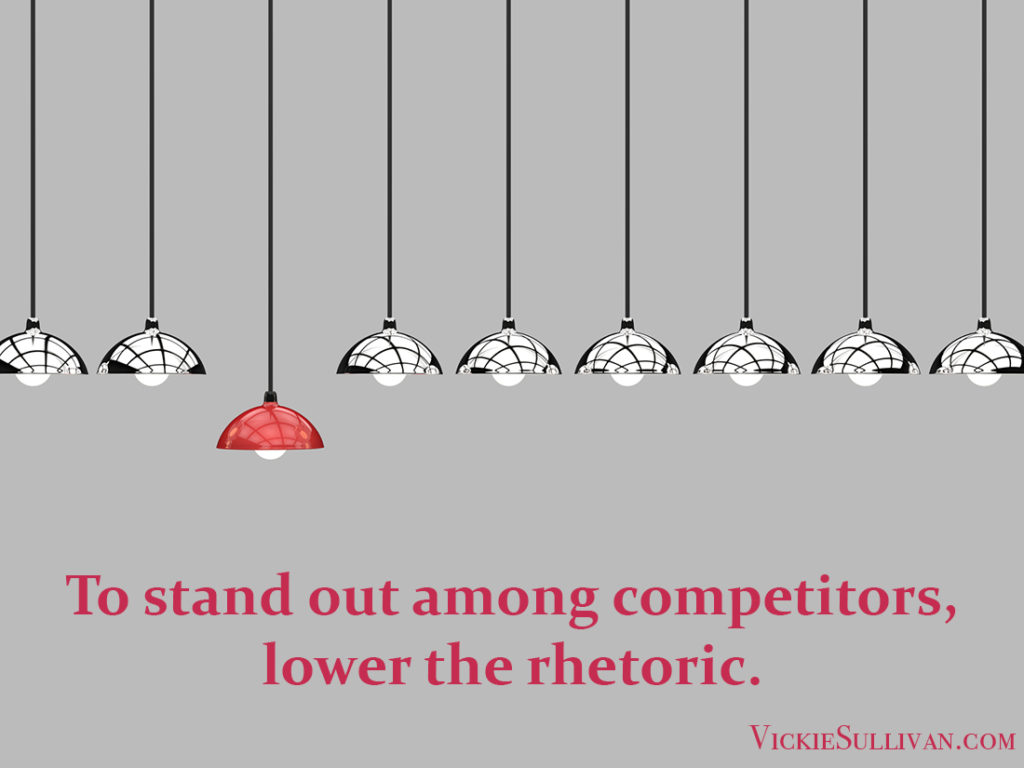Written by: Vickie Sullivan | October 11, 2016
What to Do with Biased Information

In this crazy political time, a lot of information is pouring out for us voters to consider. And most of it comes with an agenda.
We thought leaders are in the same boat. Our buyers are looking at our information (and everyone else’s) and trying to decide whether to dismiss it or keep reading. So, how do voters (and buyers) decide what to believe and what to ignore?
A lot of folks look at the source and stop there. As a researcher and analyst, I dig deeper. Here are the three ways I separate the honest from the hype.
1. Word usage. This tells me how passionate someone is—whether they are emotionally triggered or merely curious. If the author uses a lot of inflammatory words, I take note but largely ignore them. That tells me more about the author than the information.
Related: How to Introduce a New Idea
2. Criteria. Bias creeps into what we choose to measure. Sophisticated buyers assume your standards will be skewed towards your solutions. So, I toss out any criteria that are too subjective or lead to only one solution.
3. Recommendations. I only look at the ideas that can be applied without the author’s help. I also toss out solutions are based on the wrong criteria (see above point).
A lot of thought leaders use articles and add their commentary. To stand out, lower the rhetoric. By focusing on these three things, you can use any information out there as a springboard to your perspective and recommendations.
Other Resources You May Like:
- Content Marketing Trends That Change Everything
- Your Position of Power: Packaging Your Expertise for High-fee Markets
